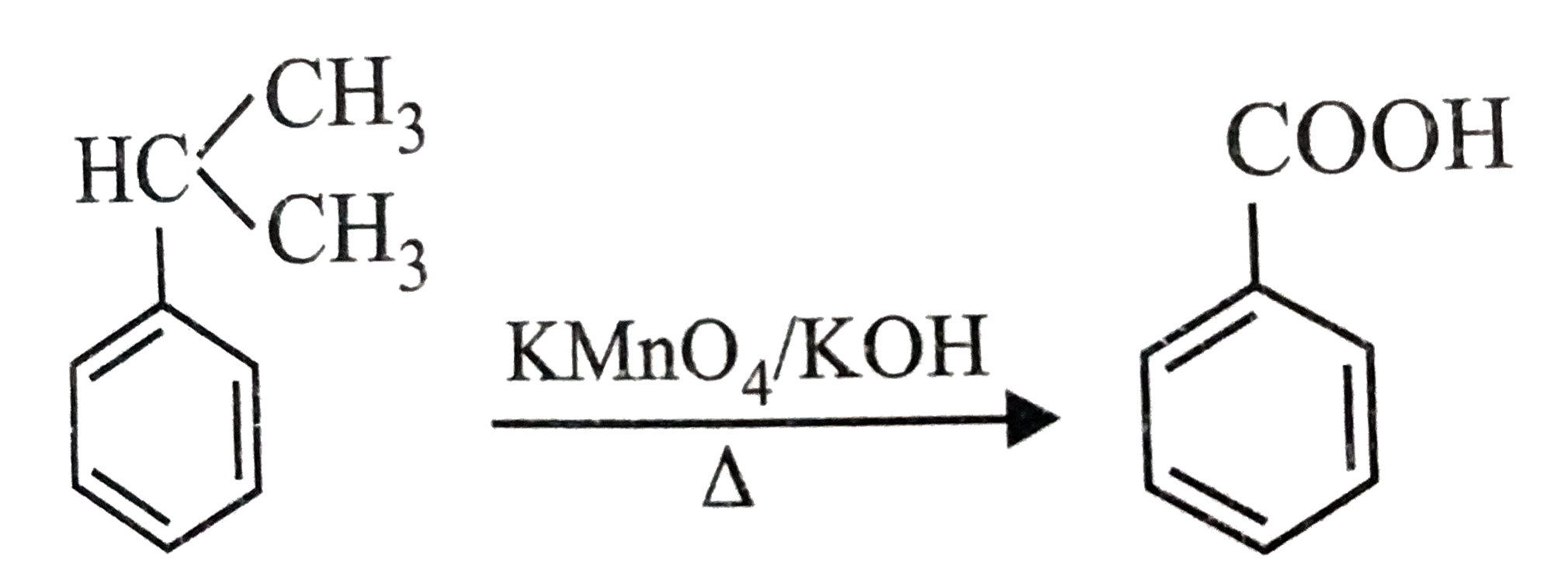Which of the following displacement does not occur:
Zn+2H+→Zn2++H2↑⏐
Fe+2Ag+→Fe2++Ag⏐↓
Cu+Fe2+→Cu2++Fe⏐↓
Zn+Pb2+→Zn2++Pb⏐↓
The correct Answer is:A, B, D
To determine which displacement does not occur among the given reactions, we need to analyze the reactivity of the metals involved based on the reactivity series. Here's a step-by-step solution:
Step 1: Understand the Reactivity Series
The reactivity series is a list of metals arranged in order of decreasing reactivity. The more reactive metal can displace a less reactive metal from its compound. The order of reactivity is as follows:
- Potassium (K)
- Sodium (Na)
- Calcium (Ca)
- Magnesium (Mg)
- Aluminium (Al)
- Carbon (C)
- Zinc (Zn)
- Iron (Fe)
- Tin (Sn)
- Lead (Pb)
- Hydrogen (H)
- Copper (Cu)
- Silver (Ag)
- Gold (Au)
- Platinum (Pt)
Step 2: Analyze Each Reaction
1. Zinc displacing Hydrogen:
- Reaction: Zn + 2H⁺ → Zn²⁺ + H₂
- Zinc is more reactive than hydrogen, so this reaction occurs.
2. Iron displacing Silver:
- Reaction: Fe + 2Ag⁺ → Fe²⁺ + 2Ag
- Iron is more reactive than silver, so this reaction occurs.
3. Copper displacing Iron:
- Reaction: Cu + Fe²⁺ → Cu²⁺ + Fe
- Copper is less reactive than iron, so this reaction does not occur.
4. Zinc displacing Lead:
- Reaction: Zn + Pb²⁺ → Zn²⁺ + Pb
- Zinc is more reactive than lead, so this reaction occurs.
Step 3: Conclusion
From the analysis, the reaction that does not occur is the one where copper attempts to displace iron. Therefore, the answer is:
Answer: Copper does not displace iron (Option 3).
The reactivity series is a list of metals arranged in order of decreasing reactivity. The more reactive metal can displace a less reactive metal from its compound. The order of reactivity is as follows:
- Potassium (K)
- Sodium (Na)
- Calcium (Ca)
- Magnesium (Mg)
- Aluminium (Al)
- Carbon (C)
- Zinc (Zn)
- Iron (Fe)
- Tin (Sn)
- Lead (Pb)
- Hydrogen (H)
- Copper (Cu)
- Silver (Ag)
- Gold (Au)
- Platinum (Pt)
1. Zinc displacing Hydrogen:
- Reaction: Zn + 2H⁺ → Zn²⁺ + H₂
- Zinc is more reactive than hydrogen, so this reaction occurs.
- Reaction: Fe + 2Ag⁺ → Fe²⁺ + 2Ag
- Iron is more reactive than silver, so this reaction occurs.
- Reaction: Cu + Fe²⁺ → Cu²⁺ + Fe
- Copper is less reactive than iron, so this reaction does not occur.
- Reaction: Zn + Pb²⁺ → Zn²⁺ + Pb
- Zinc is more reactive than lead, so this reaction occurs.
From the analysis, the reaction that does not occur is the one where copper attempts to displace iron. Therefore, the answer is:
Topper's Solved these Questions
- TEST PAPERSBOOK - RESONANCE ENGLISHCHAPTER - TEST PAPERSEXERCISE - PT-01
30 Videos
- TEST PAPERSBOOK - RESONANCE ENGLISHCHAPTER - TEST PAPERSEXERCISE - Pt-02
30 Videos
- TEST PAPERSBOOK - RESONANCE ENGLISHCHAPTER - TEST PAPERSEXERCISE - PART - III CHEMISTRY
20 Videos
- SURFACE CHEMISTRYBOOK - RESONANCE ENGLISHCHAPTER - SURFACE CHEMISTRYEXERCISE - Section - 5
1 Videos
- TEST SERIESBOOK - RESONANCE ENGLISHCHAPTER - TEST SERIESEXERCISE - CHEMISTRY
50 Videos
Similar Questions
Knowledge Check
Which of the following reactions does not occur ?
A B
B C
C D
D
Which of the following reaction does not occur?
View SolutionWhich of the following reaction does not occur spontaneously?
View SolutionWhich of the following reactions does not occur during calcination?
View SolutionWhich of the following reactions does not occur during calcination?
View SolutionWhich of the following reaction does not occur in Bessemer’s converter ?
View SolutionWhich of the following reaction does not occur in Bessemer’s converter ?
View SolutionWhich of the following is displaced by Fe ?
View Solution
